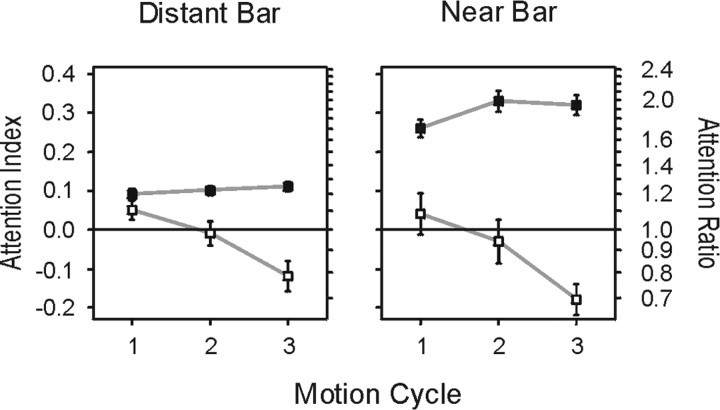Figure 8.
Time course of attention index and attention ratio during three consecutive motion cycles for preferred (▪) and null (□) motion stimuli. In both experiments, attentional modulation of response rates to preferred motion showed only a moderate increase over time. In contrast, the AI calculated for null motion stimuli exhibits a striking time course, falling from positive values in the first motion cycle to increasingly more negative values in the second and third motion cycles. This indicates that in both experiments, neurons tend to fire more spikes to null motion when the null stimulus is outside the focus of attention. The modulation of responses to null motion is therefore the most important reason for the continuous decline of direction selectivity over time. Error bars indicate SEM.

